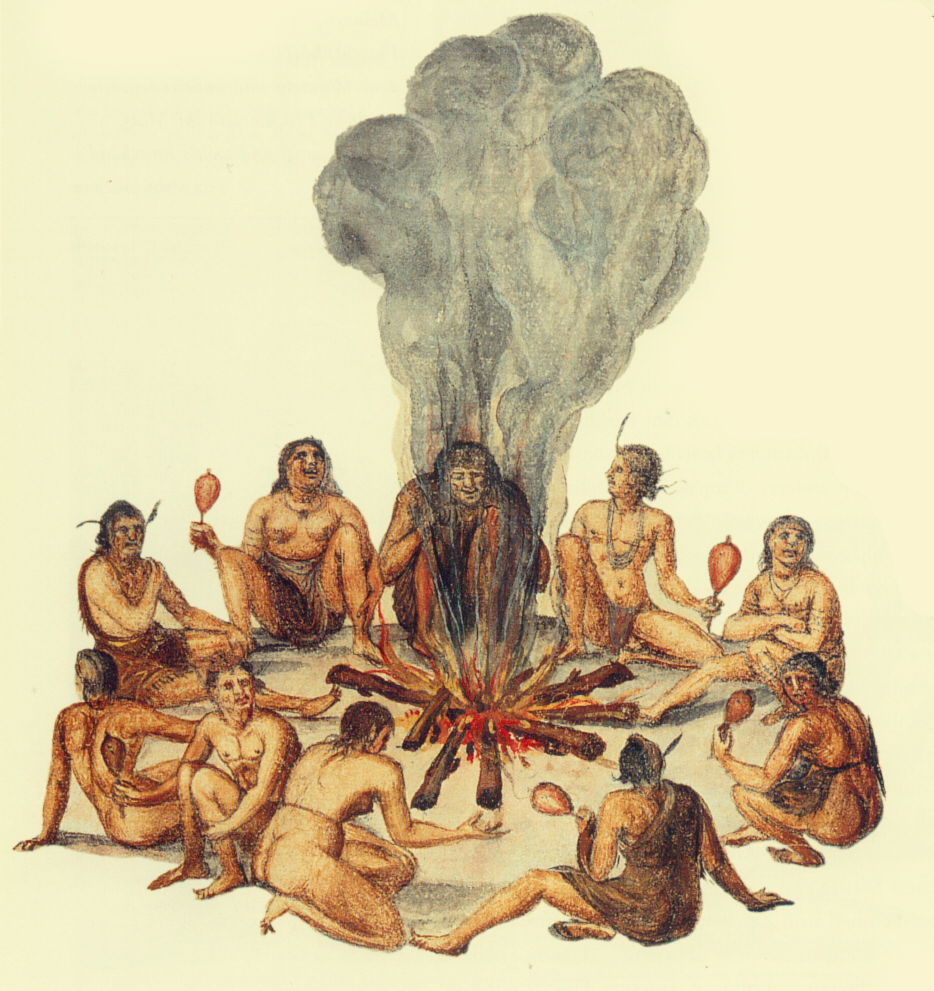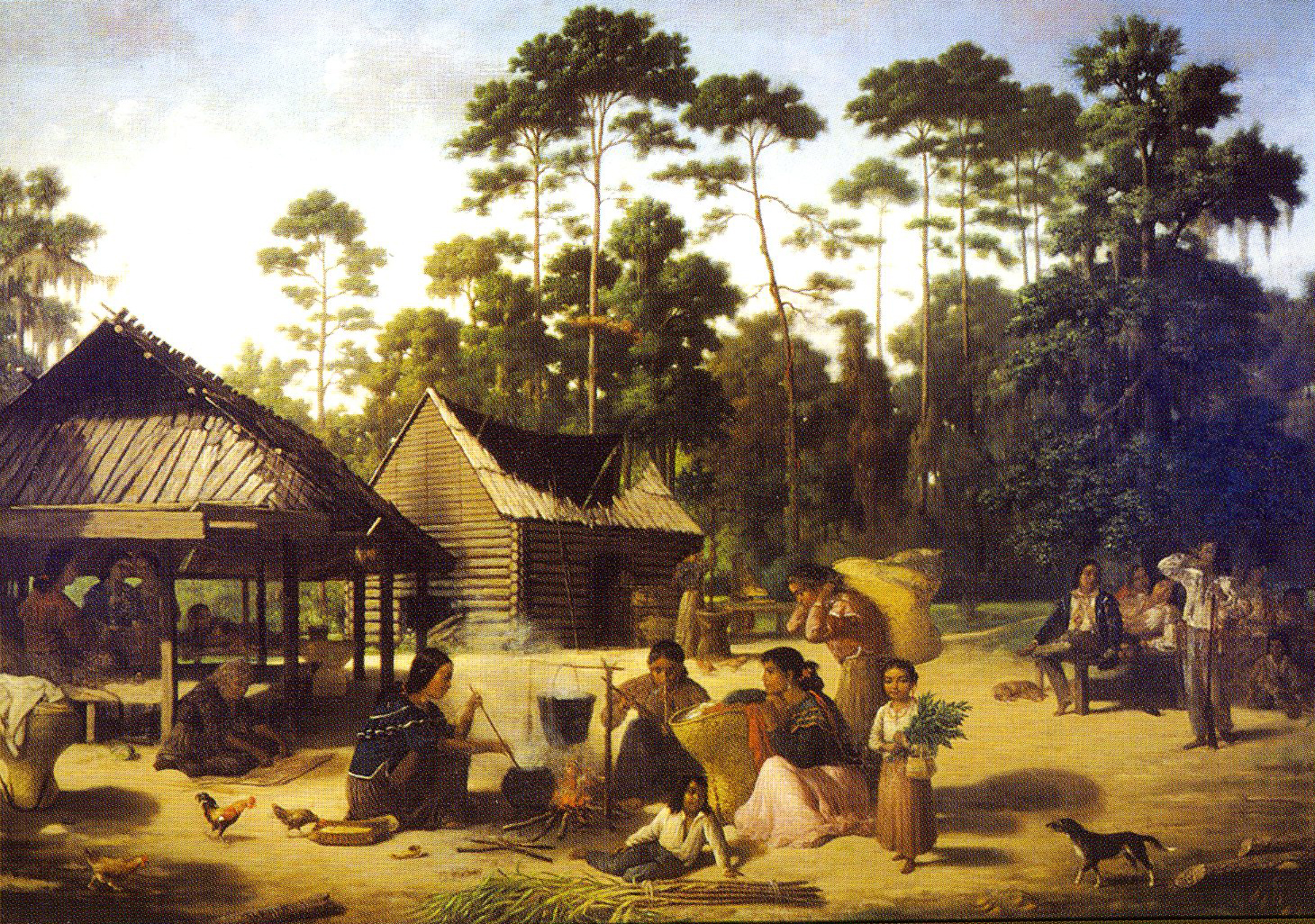|
Joara
Joara was a large Native American settlement, a regional chiefdom of the Mississippian culture, located in what is now Burke County, North Carolina, about 300 miles from the Atlantic coast in the foothills of the Blue Ridge Mountains. Joara is notable as a significant archaeological and historic site, where Mississippian culture-era and European artifacts have been found, in addition to an earthwork platform mound and remains of a 16th-century Spanish fort. The first European encounters came in the mid-16th century. In 1540 the party of Spanish conquistador Hernando De Soto recorded visiting this place. A later expedition in 1567 under Juan Pardo, another Spanish explorer, founded the first European settlement in the interior of the continent, establishing Fort San Juan at this site, followed by other forts to the west. [...More Info...] [...Related Items...] OR: [Wikipedia] [Google] [Baidu] |
Fort San Juan (Joara)
Fort San Juan was a late 16th-century fort built by the Spanish under the command of conquistador Juan Pardo in the native village of Joara, in what is now Burke County, North Carolina. Used as an outpost for Pardo's expedition into the interior of what was known to the Spaniards as ''" la Florida"'', Fort San Juan was the foremost of six forts built and garrisoned by Pardo in modern-day North Carolina, South Carolina, and Tennessee to extend Spain's effective control deeper into the North American continent. Fort San Juan was the first European settlement in North Carolina and the interior of present-day United States, predating the earliest English settlement at Roanoke Island, North Carolina by 18 years. In 1568, natives from Joara and the region surrounding the fort razed this and the five other Spanish forts, killing all but one of the soldiers. After the fort's destruction, its exact location was lost. Archaeological work has been underway for years, revealing artifacts su ... [...More Info...] [...Related Items...] OR: [Wikipedia] [Google] [Baidu] |
Chiaha
Chiaha was a Native American chiefdom located in the lower French Broad River valley in modern East Tennessee, in the southeastern United States. They lived in raised structures within boundaries of several stable villages. These overlooked the fields of maize, beans, squash, and tobacco, among other plants which they cultivated. Chiaha was the northern extreme of the paramount Coosa chiefdom's sphere of influence in the 16th century when the Spanish expeditions of Hernando de Soto and Juan Pardo passed through the area. The Chiaha chiefdom included parts of modern Jefferson and Sevier counties, and may have extended westward into Knox, Blount and Monroe counties. The Spanish explorers' accounts of Chiaha provide a rare first-hand glimpse of life in a Dallas phase Mississippian-era village. The Dallas culture, named after Dallas Island near Chattanooga, where its distinct characteristics were first observed, dominated much of East Tennessee between approximate ... [...More Info...] [...Related Items...] OR: [Wikipedia] [Google] [Baidu] |
Juan Pardo (explorer)
Juan Pardo was a Spanish explorer who was active in the later half of the sixteenth century. He led a Spanish expedition from the Atlantic coast through what is now North and South Carolina and into eastern Tennessee on the orders of Pedro Menéndez de Avilés, in an attempt to find an inland route to a silver-producing town in Mexico. Menéndez had built Fort San Felipe (1566), and established Santa Elena, on present-day Parris Island; these were the first Spanish settlements in what is now South Carolina. While leading his expedition deeper into the interior, Pardo founded Fort San Juan at Joara, the first European settlement (1567–1568) in the interior of North Carolina, and five additional forts in what are the modern US states of North Carolina, Tennessee, and South Carolina. These five forts were Fort San Pedro near Chiaha, Fort San Pablo on the French Broad River, Fort Santiago near modern Salisbury, North Carolina, Fort Santo Tomás near Cofitachequi, and Fuerta de N ... [...More Info...] [...Related Items...] OR: [Wikipedia] [Google] [Baidu] |
Morganton, North Carolina
Morganton is a city in and the county seat of Burke County, North Carolina, United States. The population was 16,918 at the 2010 census. Morganton is approximately northwest of Charlotte. Morganton is one of the principal cities in the Hickory-Lenoir-Morganton, NC Metropolitan Statistical Area. A site five miles north of Morganton has been identified as the Mississippian culture chiefdom of Joara, occupied from AD 1400 to AD 1600. This was also the site of Fort San Juan, built in 1567 by a Spanish expedition as the first European settlement in the interior of North America, 40 years before the English settlement of Jamestown, Virginia. History Joara archeological site The oldest-known European inland (non-coastal) settlement in the United States of Fort San Juan has been identified at Joara, a former Mississippian culture chiefdom located about five miles north of present-day Morganton. In 1567 a Spanish expedition built the fort there, while seeking to establish an int ... [...More Info...] [...Related Items...] OR: [Wikipedia] [Google] [Baidu] |
North Carolina
North Carolina () is a state in the Southeastern region of the United States. The state is the 28th largest and 9th-most populous of the United States. It is bordered by Virginia to the north, the Atlantic Ocean to the east, Georgia and South Carolina to the south, and Tennessee to the west. In the 2020 census, the state had a population of 10,439,388. Raleigh is the state's capital and Charlotte is its largest city. The Charlotte metropolitan area, with a population of 2,595,027 in 2020, is the most-populous metropolitan area in North Carolina, the 21st-most populous in the United States, and the largest banking center in the nation after New York City. The Raleigh-Durham-Cary combined statistical area is the second-largest metropolitan area in the state and 32nd-most populous in the United States, with a population of 2,043,867 in 2020, and is home to the largest research park in the United States, Research Triangle Park. The earliest evidence of human occu ... [...More Info...] [...Related Items...] OR: [Wikipedia] [Google] [Baidu] |
Burke County, North Carolina
Burke County is a county located in the U.S. state of North Carolina. As of the 2020 census, the population was 87,570. Its county seat is Morganton. Burke County is part of the Hickory– Lenoir–Morganton, NC Metropolitan Statistical Area. History Indigenous peoples inhabited the interior as well as the coastal areas for thousands of years. Native Americans of the complex and far-flung Mississippian culture inhabited the county long before Europeans arrived in the New World. They were part of a trade network extending from the Gulf Coast to the Great Lakes. They built earthwork mounds, including at Joara, a site and regional chiefdom in North Carolina. (Present-day Morganton developed near this site.) It was the center of the largest Native American settlement in North Carolina, dating from about 1000 AD and expanding into the next centuries. In 1567, the Spanish Juan Pardo expedition arrived and built Fort San Juan at Joara, claiming the area for the colony of Spanish ... [...More Info...] [...Related Items...] OR: [Wikipedia] [Google] [Baidu] |
Mississippian Culture
The Mississippian culture was a Native American civilization that flourished in what is now the Midwestern, Eastern, and Southeastern United States from approximately 800 CE to 1600 CE, varying regionally. It was known for building large, earthen platform mounds, and often other shaped mounds as well. It was composed of a series of urban settlements and satellite villages linked together by loose trading networks. The largest city was Cahokia, believed to be a major religious center located in what is present-day southern Illinois. The Mississippian way of life began to develop in the Mississippi River Valley (for which it is named). Cultures in the tributary Tennessee River Valley may have also begun to develop Mississippian characteristics at this point. Almost all dated Mississippian sites predate 1539–1540 (when Hernando de Soto explored the area), with notable exceptions being Natchez communities. These maintained Mississippian cultural practices into the 18th cen ... [...More Info...] [...Related Items...] OR: [Wikipedia] [Google] [Baidu] |
Cherokee
The Cherokee (; chr, ᎠᏂᏴᏫᏯᎢ, translit=Aniyvwiyaʔi or Anigiduwagi, or chr, ᏣᎳᎩ, links=no, translit=Tsalagi) are one of the indigenous peoples of the Southeastern Woodlands of the United States. Prior to the 18th century, they were concentrated in their homelands, in towns along river valleys of what is now southwestern North Carolina, southeastern Tennessee, edges of western South Carolina, northern Georgia (U.S. state), Georgia, and northeastern Alabama. The Cherokee language is part of the Iroquoian languages, Iroquoian language group. In the 19th century, James Mooney, an early American Ethnography, ethnographer, recorded one oral tradition that told of the Tribe (Native American), tribe having migrated south in ancient times from the Great Lakes region, where other Iroquoian Peoples, Iroquoian peoples have been based. However, anthropologist Thomas R. Whyte, writing in 2007, dated the split among the peoples as occurring earlier. He believes that the ori ... [...More Info...] [...Related Items...] OR: [Wikipedia] [Google] [Baidu] |
Ohio
Ohio () is a U.S. state, state in the Midwestern United States, Midwestern region of the United States. Of the List of states and territories of the United States, fifty U.S. states, it is the List of U.S. states and territories by area, 34th-largest by area, and with a population of nearly 11.8 million, is the List of U.S. states and territories by population, seventh-most populous and List of U.S. states and territories by population density, tenth-most densely populated. The state's capital and List of cities in Ohio, largest city is Columbus, Ohio, Columbus, with the Columbus metropolitan area, Ohio, Columbus metro area, Cincinnati metropolitan area, Greater Cincinnati, and Greater Cleveland being the List of metropolitan statistical areas, largest metropolitan areas. Ohio is bordered by Lake Erie to the north, Pennsylvania to the east, West Virginia to the southeast, Kentucky to the southwest, Indiana to the west, and Michigan to the northwest. Ohio is historically known as ... [...More Info...] [...Related Items...] OR: [Wikipedia] [Google] [Baidu] |
Mississippi
Mississippi () is a state in the Southeastern region of the United States, bordered to the north by Tennessee; to the east by Alabama; to the south by the Gulf of Mexico; to the southwest by Louisiana; and to the northwest by Arkansas. Mississippi's western boundary is largely defined by the Mississippi River. Mississippi is the 32nd largest and 35th-most populous of the 50 U.S. states and has the lowest per-capita income in the United States. Jackson is both the state's capital and largest city. Greater Jackson is the state's most populous metropolitan area, with a population of 591,978 in 2020. On December 10, 1817, Mississippi became the 20th state admitted to the Union. By 1860, Mississippi was the nation's top cotton-producing state and slaves accounted for 55% of the state population. Mississippi declared its secession from the Union on January 9, 1861, and was one of the seven original Confederate States, which constituted the largest slaveholding states in the ... [...More Info...] [...Related Items...] OR: [Wikipedia] [Google] [Baidu] |
Infectious Disease
An infection is the invasion of tissues by pathogens, their multiplication, and the reaction of host tissues to the infectious agent and the toxins they produce. An infectious disease, also known as a transmissible disease or communicable disease, is an illness resulting from an infection. Infections can be caused by a wide range of pathogens, most prominently bacteria and viruses. Hosts can fight infections using their immune system. Mammalian hosts react to infections with an innate response, often involving inflammation, followed by an adaptive response. Specific medications used to treat infections include antibiotics, antivirals, antifungals, antiprotozoals, and antihelminthics. Infectious diseases resulted in 9.2 million deaths in 2013 (about 17% of all deaths). The branch of medicine that focuses on infections is referred to as infectious disease. Types Infections are caused by infectious agents ( pathogens) including: * Bacteria (e.g. ''Mycobacterium ... [...More Info...] [...Related Items...] OR: [Wikipedia] [Google] [Baidu] |
Roanoke Island
Roanoke Island () is an island in Dare County, bordered by the Outer Banks of North Carolina, United States. It was named after the historical Roanoke, a Carolina Algonquian people who inhabited the area in the 16th century at the time of English colonization. About long and wide, the island lies between the mainland and the barrier islands near Nags Head. Albemarle Sound lies on its north, Roanoke Sound on the eastern, Croatan Sound on the west, and Wanchese CDP lies at the southern end. The town of Manteo is located on the northern portion of the island, and is the county seat of Dare County. Fort Raleigh National Historic Site is on the north end of the island. The island has a land area of and a population of 6,724 as of the 2000 census. Today U.S. Highway 64, a major highway, connects mainland North Carolina to the Outer Banks, as well as Roanoke Island. The island has recreational and water features, plus historical sites and an outdoor theater that form one ... [...More Info...] [...Related Items...] OR: [Wikipedia] [Google] [Baidu] |







